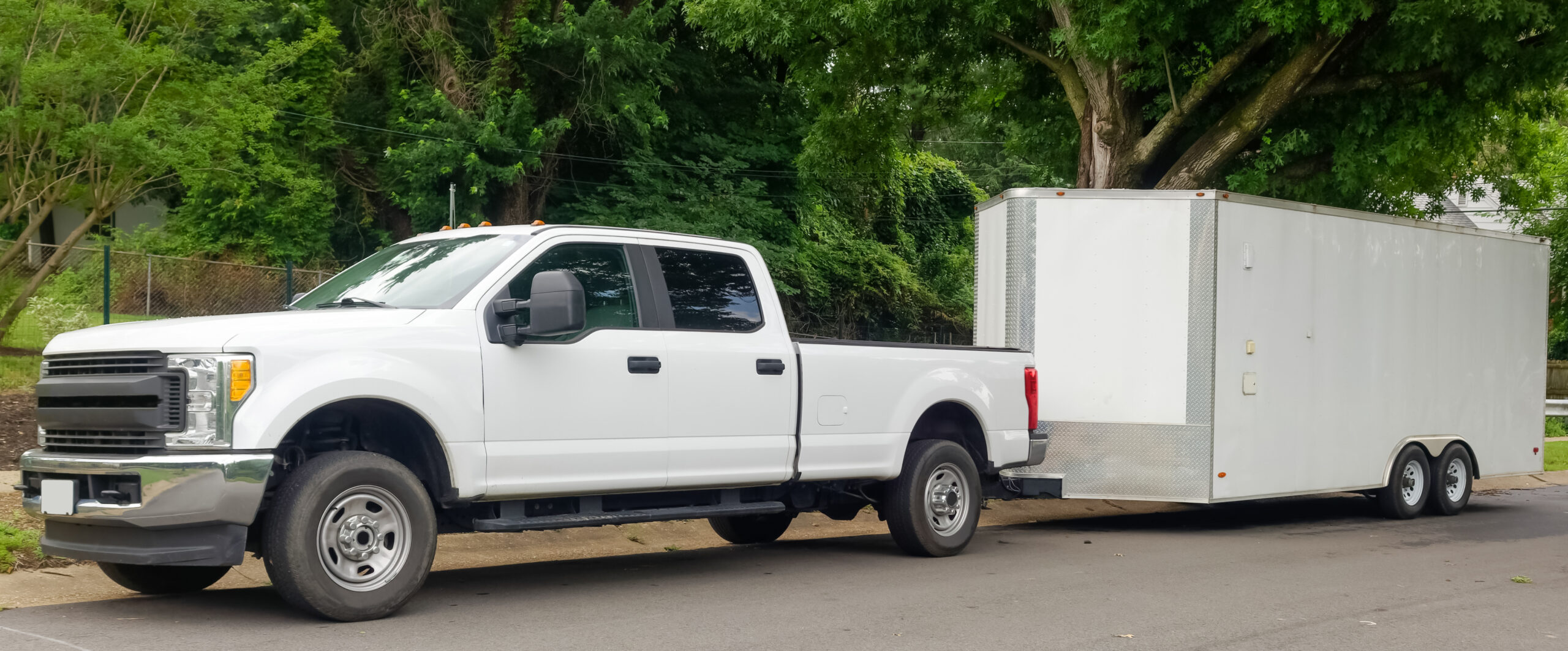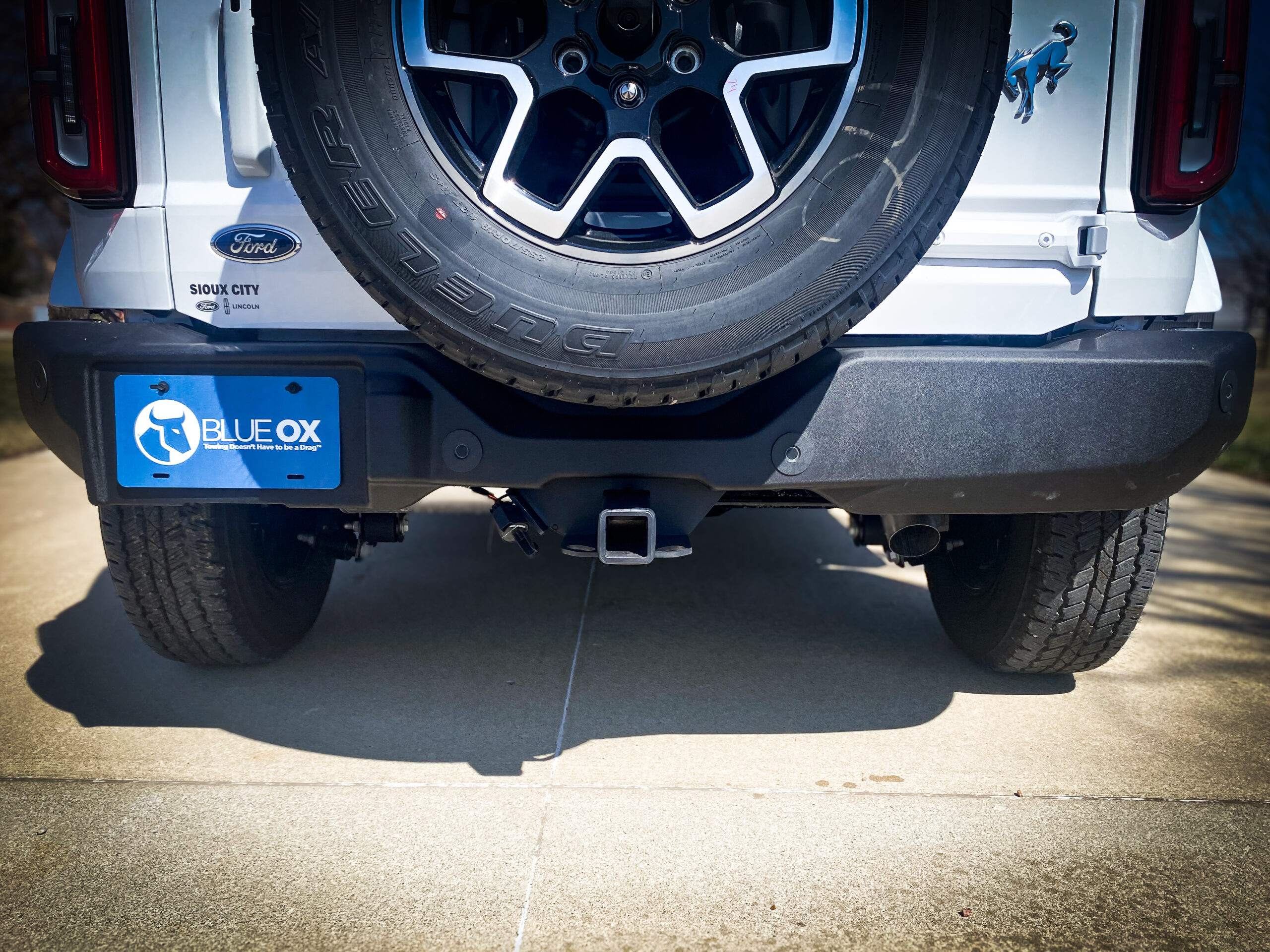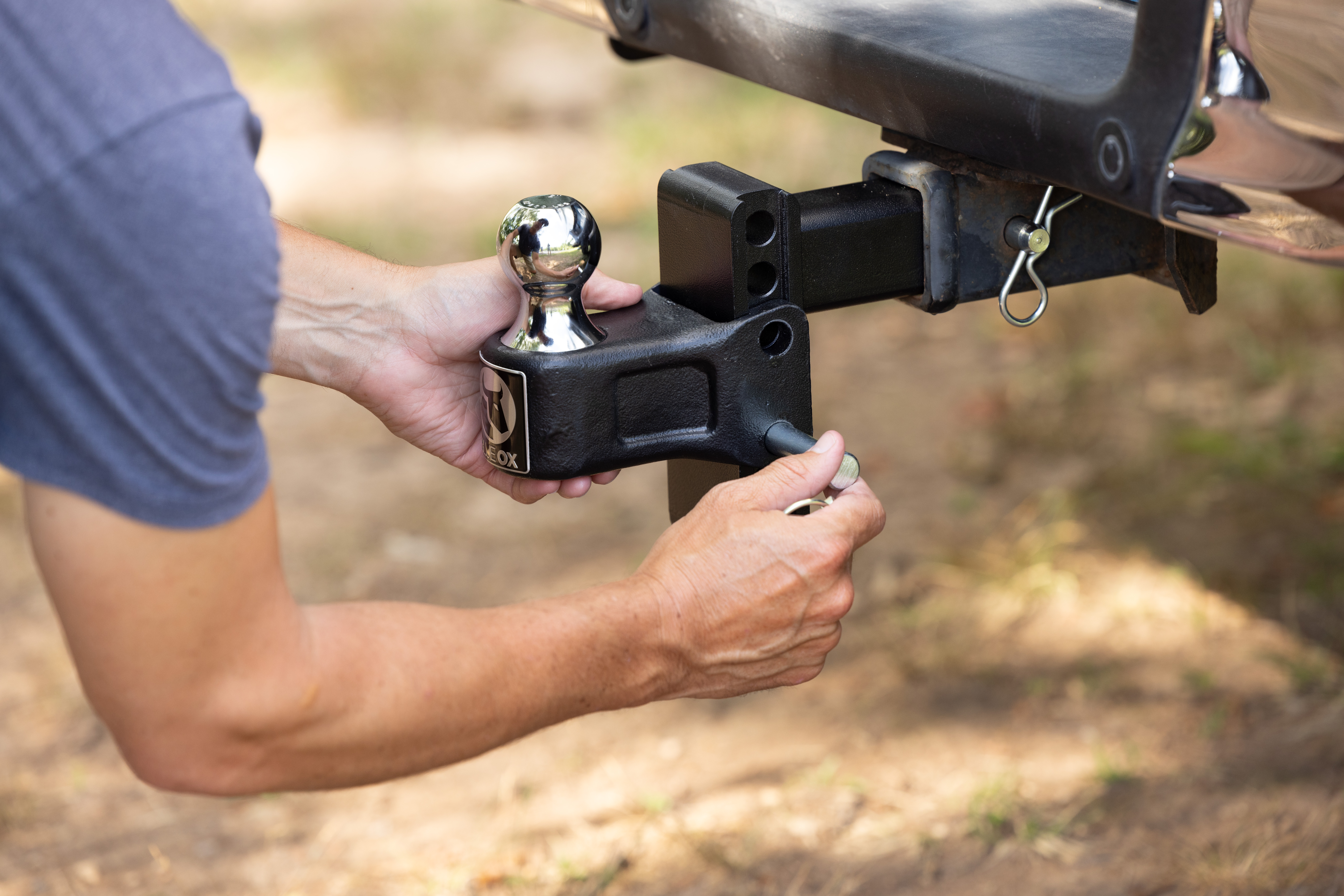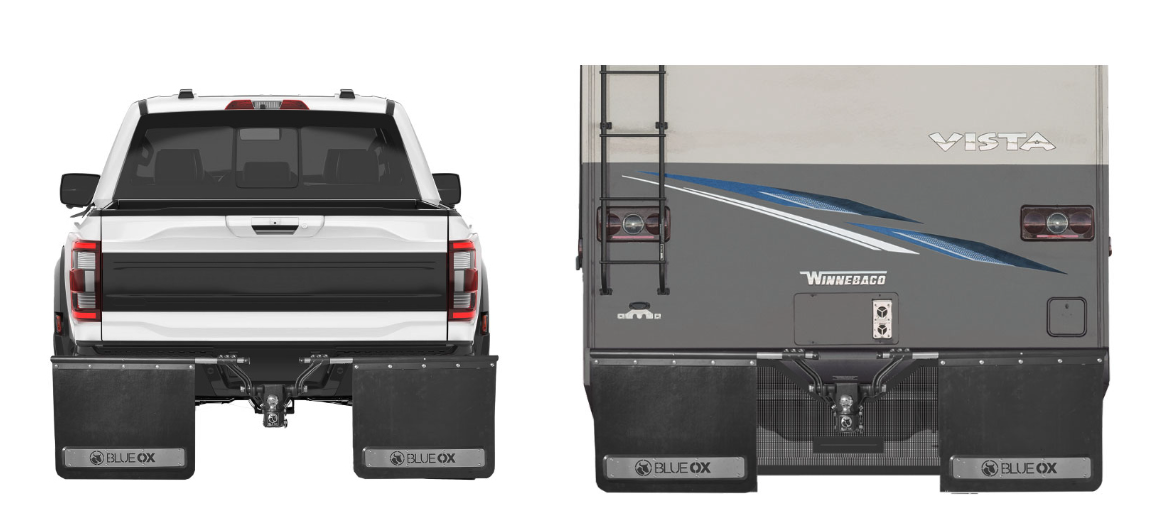If you’ve ever heard someone say that towing a trailer is just like driving a car, don’t listen to them. They’re sadly mistaken! Drivers who have been towing trailers for years might make it look easy, but they probably learned from their mistakes over the years. So, if it’s been a while since you have towed a trailer or you are a beginner hauling one for the first time, take a look at these trailer towing basics so you and your trailer can make it safely to your destination.
Trailer Towing Basics: Pre-Trip Checks
Before you load up and roll out, there are a few important things you need to consider.
Weight
You will want to be sure you’ve chosen the right type of trailer and that the load you’ll be hauling doesn’t exceed the maximum rated capacity of your trailer. Each trailer has a GVWR, aka gross vehicle weight rating, that can be found on the trailer’s manufacturer’s plate. If you go beyond this weight, it can create unsafe towing conditions or cause damage to your trailer. You will also want to be sure the trailer doesn’t outweigh your vehicle’s max tow rating. You can usually find this information on your vehicle’s ID sticker. Additionally, make sure the tongue weight is within spec as hitches have a maximum tongue weight that they can withstand.
Load Placement
When you load up your trailer, you will want to ensure that it is balanced. Proper weight and load distribution are essential to safe towing. Keep the loaded tongue weight between 10% and 15% of the total weight. Position the weight of the load slightly forward on the trailer and try to maintain even weight on the left and right sides. Once your items are loaded in the proper position, make sure to secure the load down properly. You don’t want to drive off and have things falling behind you, causing damage to other vehicles. Also, if you need to make a sudden stop, the load will want to keep moving forward, so if it isn’t fastened down securely, it could end up in the tow vehicle with you.
Brakes and Tires
If your trailer and load are over 1,000lbs, the trailer should have its own brake system. You will want to test it before each trip to ensure that it is functioning properly. It is also important to inspect your tires before each trip to check for damage or deformities, as well as tire pressure. You should also have a spare tire and the correct lug wrenches for both your trailer and towing vehicle.
Safety Check
Once you have your trailer hooked up and you’re ready to hit the road, don’t skip doing one last overall safety check. Aside from checking your brakes and tires, you will also need to use safety chains. Inspect them for damage and make sure they are connected securely and so that there is enough slack to allow for sharper turns. Check that the brake lights and turn signals are working on your trailer so other vehicles on the road can anticipate your next move.
Trailer Towing Basics: On the Road Checks
Acceleration
Remember that smooth and steady win the race here. When pulling a trailer, you will want to accelerate gradually and slowly to avoid any sudden movements that could cause your load to shift or the trailer to sway. It is advised to have a trailer sway device installed, such as the Blue Ox SwayPro, which prevents trailer sway from starting. If you need to pass another vehicle, remember that your acceleration power is going to be less than without a trailer in tow, so give yourself plenty of room to pass with enough time to merge back in front of the other vehicle.
Allow Room for Stopping
As with driving any vehicle, the distance you need to brake is going to increase, so leaving more space between you and the vehicle in front of you is crucial. You wouldn’t want to find yourself making a sudden stop that causes an accident. Speaking of braking, if you will be traveling on a downgrade, avoid riding the brakes. They can overheat and fade. Using a lower transmission gear will help you use the engine to brake.
Anticipate Problems Before They Happen
Driver error is often the most common cause of accidents in everyday driving as well as when towing. Failing to simply pay attention is one of the main reasons accidents happen. When you are towing a trailer, you should try to avoid the most common trailer towing mistakes and anticipate other drivers’ moves, even more so than driving without a trailer in tow. By staying sharp behind the wheel, you can often see problems on the road developing a long way off. Stay observant of the flow of traffic, scan the road ahead, and try to avoid distractions such as cell phones or overly chatty passengers.
Use Your GPS System
These days, many newer vehicles have GPS systems built-in. If you’re driving an older tow vehicle, your smartphone should have a GPS map to help you navigate to your destination. If you are driving to a place that is far away or unfamiliar to you and you’re traveling with a passenger, have them monitor the GPS system to make sure you are taking a route that is best for towing a trailer. Depending on where you’re headed, you could end up on a rural highway with conditions that aren’t ideal when towing a trailer. GPS may also alert you if you will be entering an area with a lot of road work you may want to avoid.
Get The Right Gear
Prevent Trailer Sway
One of the scariest experiences a driver can have when towing a trailer is trailer sway. Trailer sway can occur for a variety of reasons. When a force, such as wind, comes from the side of the trailer, it can force your trailer out of the straight line you were traveling in and create sway. Trailer sway can also be caused by uneven road conditions, bow wind from semi-trucks, or poorly loading your trailer. Once the trailer starts this swaying motion, it can get out of control quickly and cause an accident. By purchasing and installing a weight-distribution hitch, you add an important layer of safety. Even if you load your trailer correctly, trailer sway can still happen without the help of a weight-distribution hitch.
Install Your Weight Distribution Hitch Properly
Equip yourself with the right gear to keep you safe. SwayPro by Blue Ox is a weight-distribution hitch that prevents trailer sway before it starts. Unlike other inferior friction sway devices, SwayPro uses tensioned spring bars to apply pressure on either side of the device to keep the trailer in line with your towing vehicle. SwayPro is easy to install and very user-friendly. Without any additional clips or pins, self-locking spring bars slip in and latch by simply rotating the bar 90 degrees. The sway control mechanism is also built into the open design head, allowing for simple hitch ball tightening. Every SwayPro comes with step-by-step instructions for quick and easy installation.
Contact Blue Ox Today
SwayPro prevents trailer sway before it starts, using spring bars to keep constant pressure inward to hold the trailer in place. This highly effective type of trailer sway prevention is easy to install and is one of the safest, user-friendly sway prevention systems on the market today. It is an excellent addition to your trailer towing basics! Reach your destination safely with the help of Blue Ox. For more information about SwayPro or other Blue Ox towing products, contact us today or visit our website to view our range of products.











